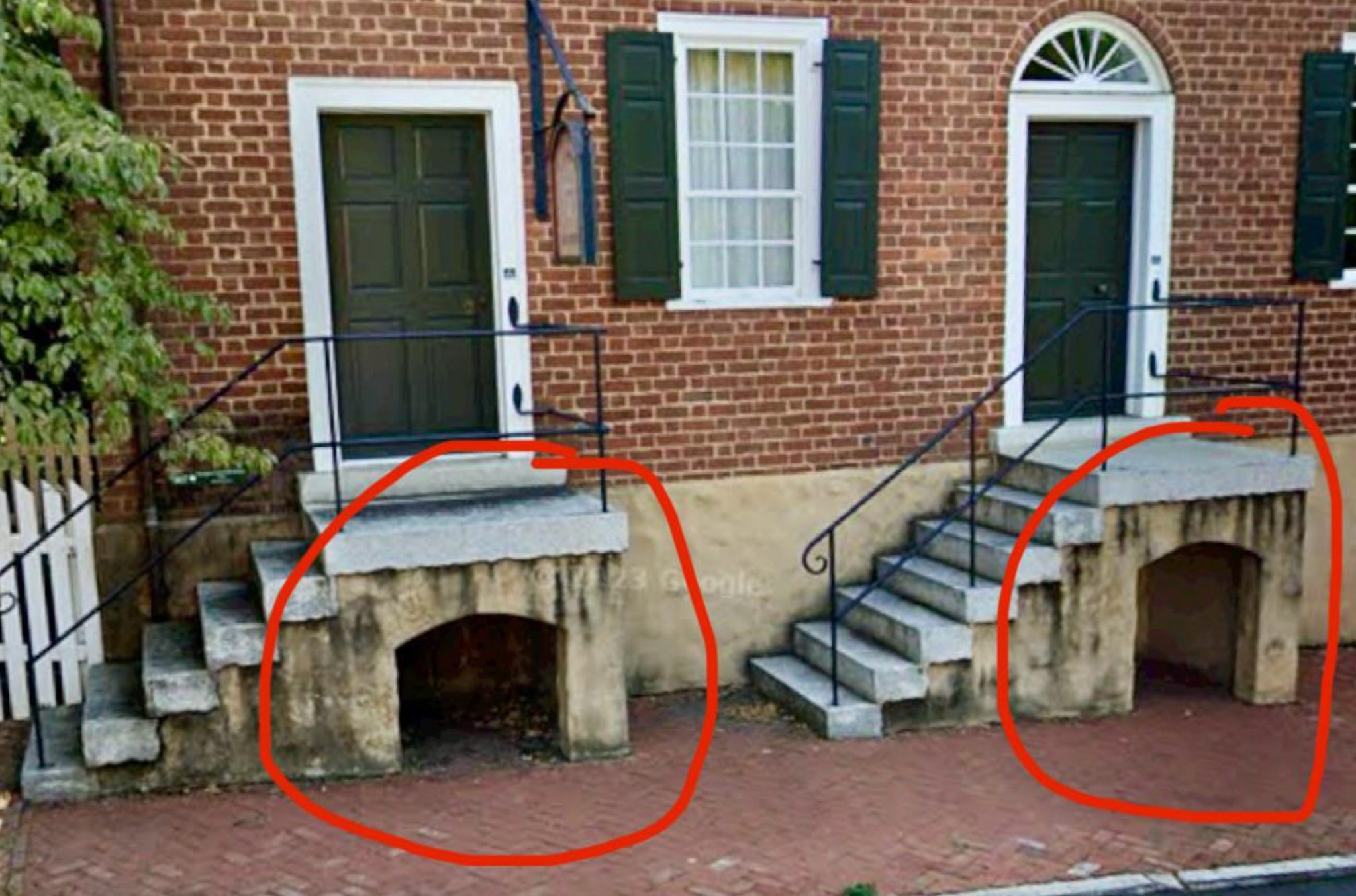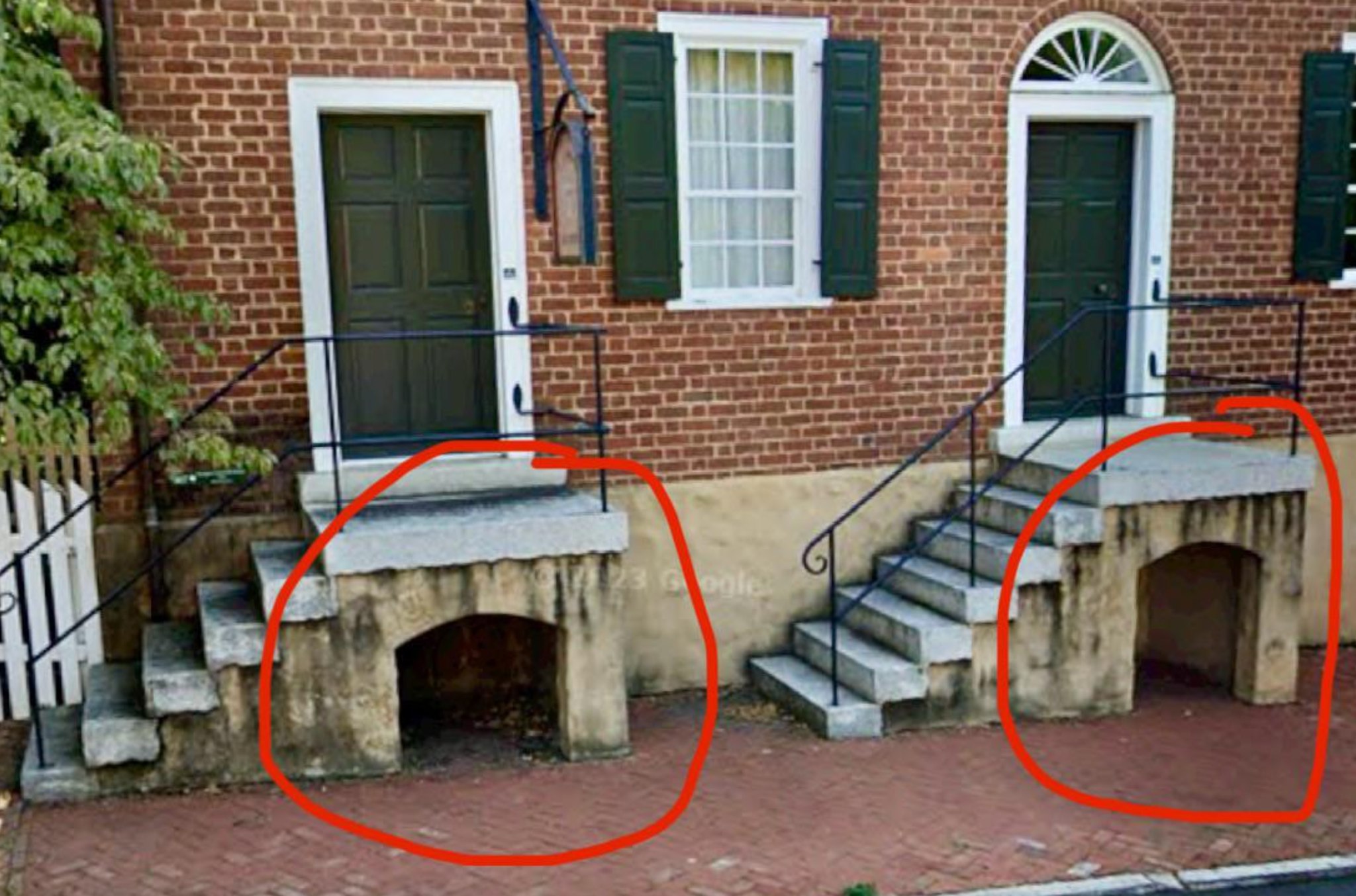If you’ve walked through historic areas in cities like Boston or Charleston, you may have noticed a small, bricked-up space or arched chamber under the front steps of an old rowhouse. These aren’t random design choices; they’re called stoop vaults, practical features from the 18th and 19th centuries that played a key role in daily life and still hold a special place in the story of urban homes.
Many city homes were built with raised entrances to avoid flooding in areas with poor drainage, creating empty spaces under the steps. These were turned into stoop vaults, often made of brick or stone, mainly to store coal, which fueled homes for heating and cooking during the World War I era. Coal was delivered through a hatch in the sidewalk, landing in the vault to keep the mess out of the house while staying easy to access for families.

In dense urban neighborhoods with little room for basements or yards, these vaults were a clever way to store essentials like firewood, tools, or seasonal items, keeping homes functional and uncluttered. As coal fell out of use with modern heating, many vaults were sealed or forgotten, but they remain in historic areas. A Reddit post showcased two rowhouses with visible vault arches, and a Bremerton, Washington, homeowner described their 1939 home’s vault, closed in the 1970s, reopened in the 1990s, and now used for firewood after drainage improvements.
These small spaces tell a big story about how people lived, when every part of a home was designed with purpose. Some homeowners preserve them as historic features, while others adapt them for storage or garden spaces. They’re a reminder of a time when heating meant managing coal, and city life demanded creative solutions for limited space.
When you next pass a rowhouse and see a little arch or sunken nook under the stoop, take a moment to appreciate its past. That humble vault once kept a household warm, and now it stands as a charming piece of history, showing how families used smart design to meet the challenges of urban living.


